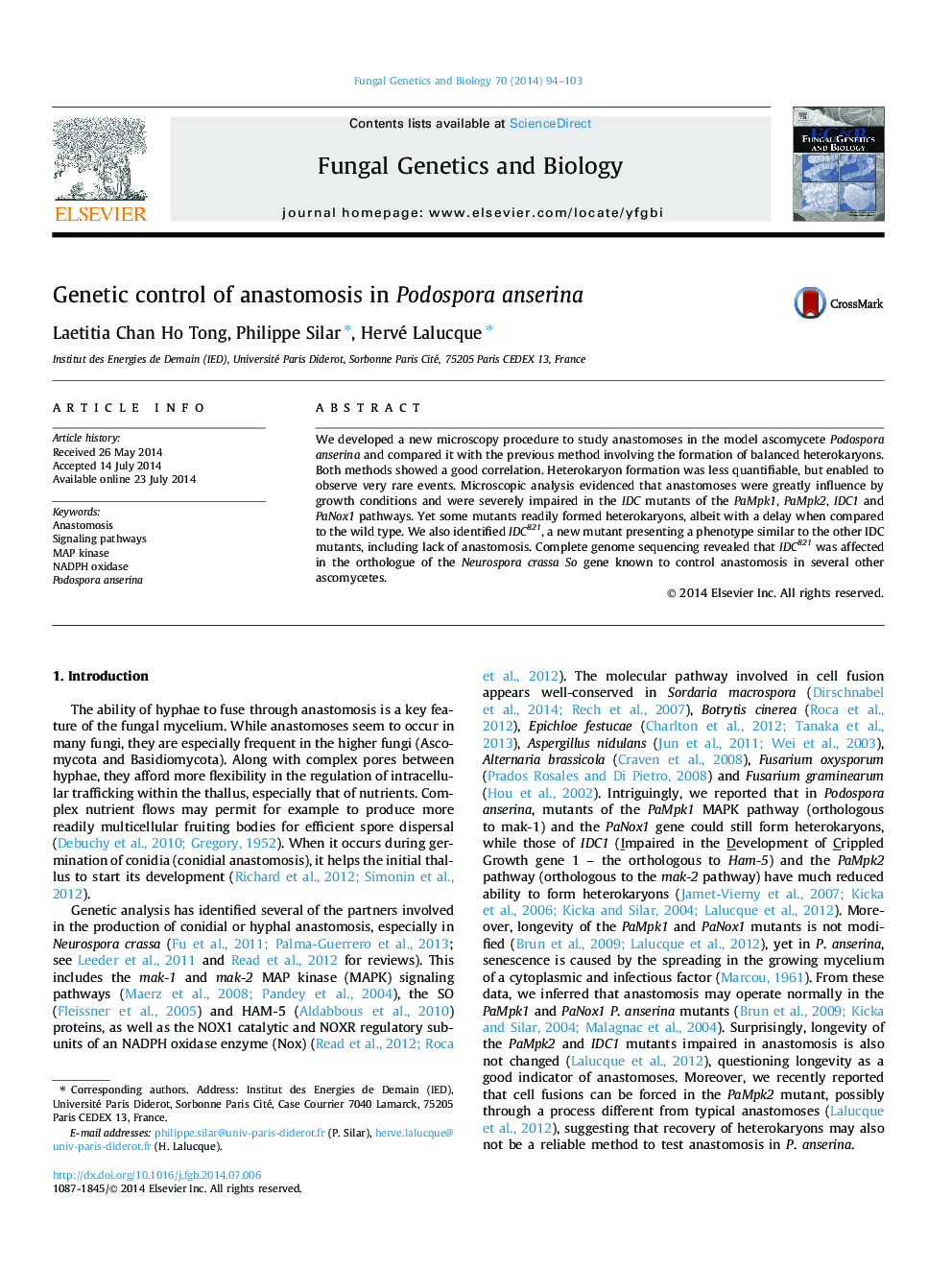| Article ID | Journal | Published Year | Pages | File Type |
|---|---|---|---|---|
| 8470855 | Fungal Genetics and Biology | 2014 | 10 Pages |
Abstract
We developed a new microscopy procedure to study anastomoses in the model ascomycete Podospora anserina and compared it with the previous method involving the formation of balanced heterokaryons. Both methods showed a good correlation. Heterokaryon formation was less quantifiable, but enabled to observe very rare events. Microscopic analysis evidenced that anastomoses were greatly influence by growth conditions and were severely impaired in the IDC mutants of the PaMpk1, PaMpk2, IDC1 and PaNox1 pathways. Yet some mutants readily formed heterokaryons, albeit with a delay when compared to the wild type. We also identified IDC821, a new mutant presenting a phenotype similar to the other IDC mutants, including lack of anastomosis. Complete genome sequencing revealed that IDC821 was affected in the orthologue of the Neurospora crassa So gene known to control anastomosis in several other ascomycetes.
Related Topics
Life Sciences
Biochemistry, Genetics and Molecular Biology
Cell Biology
Authors
Laetitia Chan Ho Tong, Philippe Silar, Hervé Lalucque,
